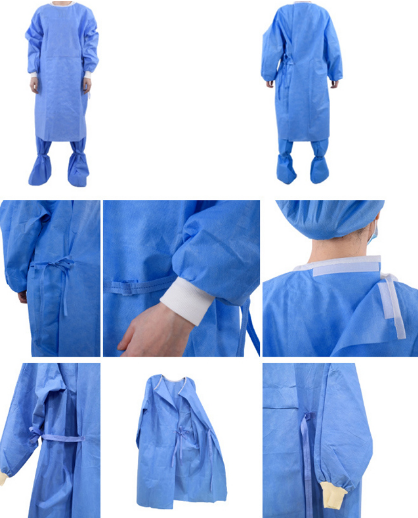Aug. 07, 2023
Health & Medical
In the realm of healthcare, safety and infection control are paramount. One crucial component in maintaining these standards is the utilization of disposable isolation gowns. These gowns play a pivotal role in safeguarding both healthcare professionals and patients from the risk of infections and contaminants.

Disposable isolation gowns, as the name suggests, are single-use protective garments designed to create a barrier between the wearer and potentially hazardous substances. These gowns are commonly worn by medical personnel during various procedures to prevent cross-contamination and the spread of infections. They are crafted from lightweight and fluid-resistant materials, ensuring both comfort and functionality.
Disposable medical isolation gowns come in a variety of styles and materials, catering to diverse needs within the healthcare field. Some notable features and variations include:
Isolation gowns are typically made from materials such as polyethylene, polypropylene, or spunbond-meltblown-spunbond (SMS) fabric. These materials offer excellent fluid resistance while allowing for breathability and ease of movement.
Gowns may feature different closure mechanisms, including ties, snaps, or hook-and-loop fasteners. These closures ensure a secure fit and minimize the risk of exposure.
Isolation gowns are categorized into different levels of protection based on their ability to resist fluid penetration. These levels range from minimal protection (Level 1) to high protection (Level 4), allowing healthcare professionals to choose the appropriate gown based on the task at hand.
Isolation gowns can have different sleeve styles, such as full-length sleeves or thumb loops. Thumb loops help to secure the sleeves in place, providing added protection to the wrists and minimizing the risk of exposure.
Disposable isolation gowns play a crucial role in infection control within healthcare settings. They act as a barrier, preventing contact between the wearer's clothing and potentially infectious materials. By minimizing the risk of cross-contamination, these gowns contribute significantly to reducing the spread of infections.
The benefits of utilizing disposable isolation gowns are manifold and extend beyond infection control:
Disposable gowns eliminate the need for laundering and maintenance, saving time and resources. Once used, they can be responsibly disposed of, streamlining the workflow in busy healthcare environments.
In the long run, disposable gowns can prove to be more cost-effective than reusable alternatives. They eliminate the expenses associated with laundering, repair, and replacement of reusable gowns.
From routine medical check-ups to intensive surgical procedures, disposable isolation gowns are versatile and can be tailored to meet the specific needs of various healthcare activities.
The one-time use nature of disposable surgical gowns ensures that there is minimal risk of harboring contaminants or infectious agents after use. This feature is especially critical in maintaining a sterile environment.
If you are interested in sending in a Guest Blogger Submission,welcome to write for us!
All Comments ( 0 )